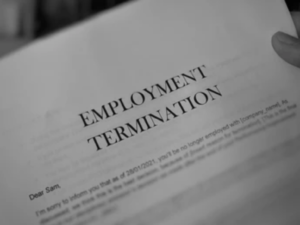Understanding Redundancy in the Workplace
Redundancy occurs when an employee’s position becomes unnecessary due to changes in a business, such as automation, cost-saving measures, or reorganisation. It’s vital for both employers and employees to understand that redundancy is a legitimate reason for termination, provided it is executed with genuine intent and follows fair procedures. This concept centres on the employer’s right to manage and reorganise its business efficiently, as long as these decisions are made in good faith and not influenced by ulterior motives.
Ensuring Procedural Fairness
 Procedural fairness is a critical aspect of managing redundancies. It involves not only the way decisions are communicated but also how they are reached. Fairness dictates that employees should be adequately consulted and informed throughout the process. Employers need to provide relevant information and allow employees to give their input. This approach ensures that decisions are not just top-down but consider the perspectives and situations of those affected. It’s important to remember that the absence of procedural fairness can often undermine the validity of a redundancy decision.
Procedural fairness is a critical aspect of managing redundancies. It involves not only the way decisions are communicated but also how they are reached. Fairness dictates that employees should be adequately consulted and informed throughout the process. Employers need to provide relevant information and allow employees to give their input. This approach ensures that decisions are not just top-down but consider the perspectives and situations of those affected. It’s important to remember that the absence of procedural fairness can often undermine the validity of a redundancy decision.
Genuineness of Redundancy
A genuine redundancy is one where the employee’s position is legitimately no longer required due to operational changes within the business. Employers must demonstrate that the redundancy is not a pretext for dismissal due to performance, personal issues, or other non-redundancy-related reasons. The focus here is on the actual necessity of the role within the current business structure, not on the performance or attributes of the individual employee.
Employer’s Managerial Prerogative
The concept of managerial prerogative acknowledges an employer’s right to make strategic business decisions, including the restructuring of their workforce. This principle, however, is balanced by the requirement of good faith and the necessity to establish that the redundancy is a genuine business decision. Employers must exercise their managerial prerogative responsibly, ensuring that any decision to make positions redundant is rooted in legitimate business needs and not driven by other, less transparent motives.
 Legal Responsibilities and Employee Rights
Legal Responsibilities and Employee Rights
In New Zealand, employers are legally obliged to handle redundancies with care and fairness. This includes providing clear reasons for the redundancy, engaging in meaningful consultation with the affected employees, and exploring possible alternatives to redundancy. For employees, it’s crucial to be aware of your rights in a redundancy situation. This includes the right to be consulted, the right to fair treatment, and in some cases, the right to a notice period or redundancy compensation, depending on the terms of the employment agreement. If these rights were violated by your employer, we could help you raise your personal grievance.
In conclusion, managing restructuring and redundancy requires a careful balance between an employer’s right to manage their business and the rights of employees to fair and transparent treatment. By adhering to these principles, businesses can ensure they navigate these challenging situations in a way that is legally compliant, ethically sound, and respectful to all parties involved. For personalised legal advice or assistance with managing a redundancy process, feel free to contact our team at MK Law.
You must be logged in to post a comment.